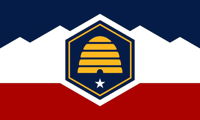
Fun With Flags! Trivia Quiz
A Study of Vexillology
Many U.S. state flags aren't especially creative, as they feature either the state seal or even the state's name. Look for the hints on the flags shown here to determine which flag goes with each state.
by ponycargirl.
Estimated time: 3 mins.









